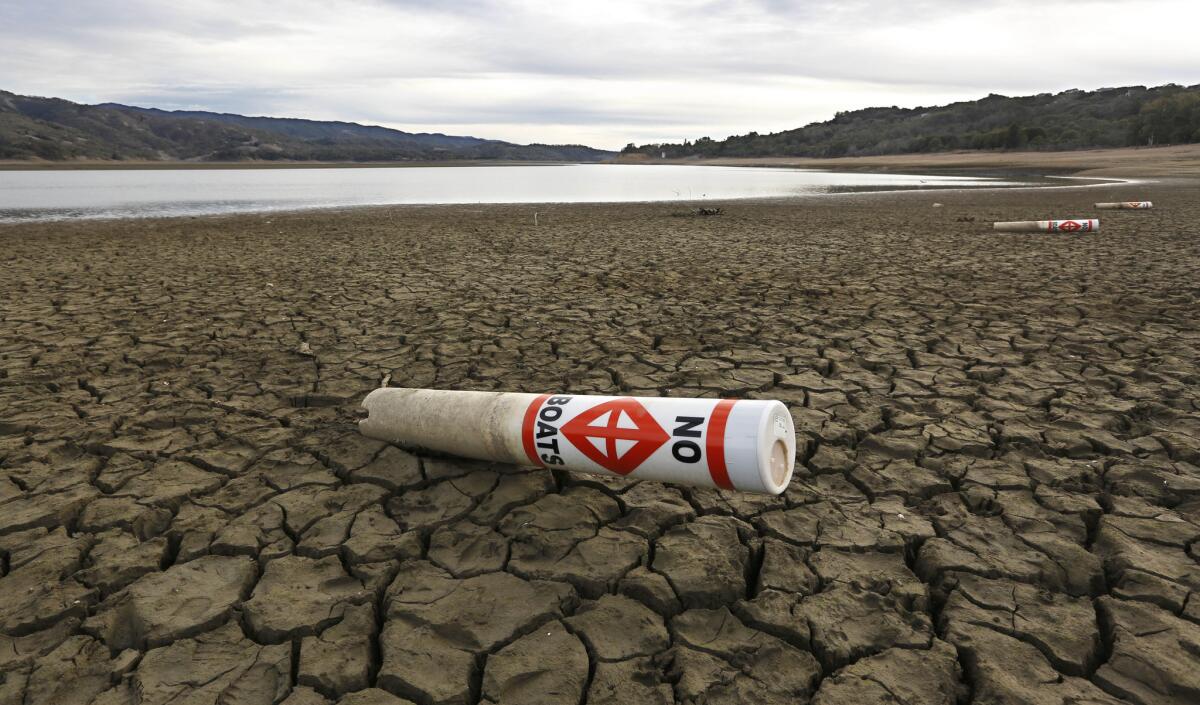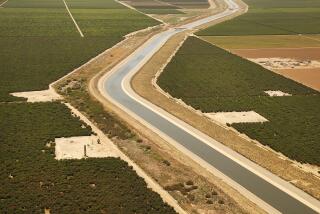Russian River basin prepares for fourth year of drought

The dry January was the topic of discussion Monday at a meeting held by the Sonoma County Water Agency, which provides drinking water to more than 600,000 residents in Sonoma and Marin counties -- relying exclusively on rainfall captured in two reservoirs.
The snowpack, paltry as it is, has no impact on Lake Mendocino and the larger Lake Sonoma to the southwest. And although the atmospheric river that brought drenching rains in December was a blessing, little has happened since.
MORE: Chronicling California’s drought
Unlike in the Bay Area, which got zero precipitation in January, some rain fell farther north, but it was a mere 0.8 of an inch, a hair more than what Santa Rosa usually gets in the hot, dry month of August.
“The lack of precipitation for the entire month puts us into the exact same situation where we were last year: going into the fourth straight year of a drought and needing to maintain our very aggressive conservation efforts,” Grant Davis, general manager of the Sonoma County Water Agency, said Monday.
Last year the agency’s slogan was, “There’s a drought on. Turn your water off.” On Monday, Davis said, the agency’s water advisory committee settled on a new slogan: “There’s still a drought on. Turn your water off.”
Residents have been responsive. State data show that this north coast region has logged some of the lowest per capita water usages, due to mandatory reductions as steep as 50% in some communities, among them Redwood Valley, where residents are limited to 50 gallons a day.
Now, they will be told to double down for another year.
A turf removal program that grants residents rebates saw as many as a half-million square feet pulled up last year will continue. And a campaign to install low flush toilets for residents who rely on the smaller Lake Mendocino -- which cannot hold more than a year’s supply -- began in December. Its goal: to save as many as 40 million gallons.
The agency covers the Russian River basin, one of the most flood-prone in the state. And its tasks are multiple. It sells drinking water to smaller water districts that distribute it to users. It must balance the needs of threatened Chinook salmon and steelhead trout by releasing crucial flows to support the fishery during the fall and winter seasons.
And it must avert flooding: When water in the reservoirs exceeds a trigger point, the U.S. Army Corps of Engineers takes over and orders water released, flushed out to the ocean.
That happened when an atmospheric river deluged the region in 2012 – but after the reservoir water was released, no more rain came.
To better plan and hold on to crucial supplies, the agency has been working closely with UC San Diego’s Scripps Institution of Oceanography, as well as the state Department of Water Resources and the National Oceanic and Atmospheric Administration to better predict when an atmospheric river is -- or isn’t -- coming.
If such research were to reveal dry days ahead after a deluge, the Army Corps of Engineers might be persuaded to hold off on any releases.
The December rains were significant. Rainfall for the Santa Rosa basin is now at about average for the year, though the Ukiah basin is only at 84% of average, water agency figures show.
But reservoirs remain low. And the question on everyone’s mind is, “What comes next?”
A storm predicted for late this week could bring as much as 6 inches of rainfall. But steady repeats would be needed to right the course.
Said Davis: “It’s the spring rains that are really the make-or-break for us.”
Twitter: @leeromney
More to Read
Sign up for Essential California
The most important California stories and recommendations in your inbox every morning.
You may occasionally receive promotional content from the Los Angeles Times.











